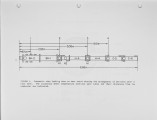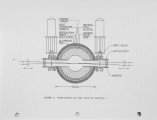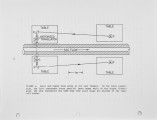| Title |
Cars Temperature Measurements in a Coal-Fired MHD Environment |
| Creator |
Beiting, E. J. |
| Publisher |
University of Utah |
| Date |
1983 |
| Spatial Coverage |
Akron, Ohio |
| Abstract |
Coherent anti-Stokes Raman Spectroscopy (CARS) was used to make temperature measurements in a test stand that simulates the gas stream in the post-combustion region of a coal-fired MHD generator. In this work, a portion of the second harmonic of a pulsed Nd:YAG laser was used to longitudinally pump a broadband oscillator-amplifier dye laser. The output from the dye laser and the remaining Nd:YAG laser radiation were combined and focused at the point of measurement. This measurement point was moved across the gas stream by translating the focusing lens using a remotely operated stepper-motor drive. Three dimensional BOXCARS phasematching was employed. Measurements were made across an eight inch diameter flow using molecular nitrogen as the probe species. Temperature profiles across the flow were obtained at distances of 0.87, 2.95, 5.08 and 6.61 ra downstream from the combustor for stoichiometric values of 0.85, 0.95, 1.05 and 1.15. Temperatures exceeding 2500K were observed. Spatial resolution was ~5 mm. Coal slag was introduced into the air-fed, diesel-fuelled combustor at several rates-the maximum rate corresponding to a 50 percent ash carryover. Additional tests were made while seed (K2SO4) was injected into this stream yielding a medium with a one percent potassium concentration. A discussion of the effects of the slag and seed injection on the CAR spectra is presented. |
| Type |
Text |
| Format |
application/pdf |
| Language |
eng |
| Rights |
This material may be protected by copyright. Permission required for use in any form. For further information please contact the American Flame Research Committee. |
| Conversion Specifications |
Original scanned with Canon EOS-1Ds Mark II, 16.7 megapixel digital camera and saved as 400 ppi uncompressed TIFF, 16 bit depth. |
| Scanning Technician |
Cliodhna Davis |
| ARK |
ark:/87278/s69z97f3 |
| Setname |
uu_afrc |
| ID |
727 |
| Reference URL |
https://collections.lib.utah.edu/ark:/87278/s69z97f3 |




























